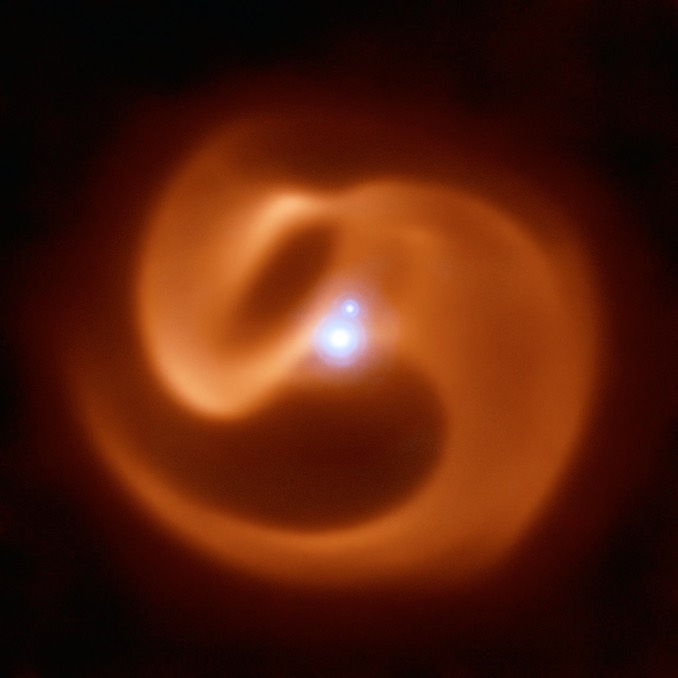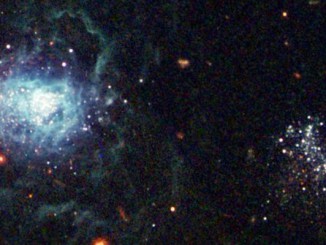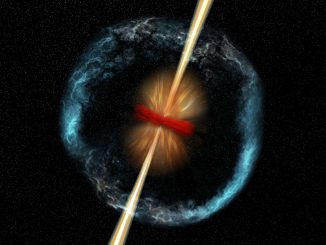
Astronomers using the European Southern Observatory’s Very Large Telescope and the VISIR infrared imager and spectrometer have found a triple star system featuring two massive, rapidly-rotating Wolf-Rayet suns throwing off a huge pinwheel of solar wind-driven debris. The star system faces an explosive future as a likely source for a long-duration gamma ray burst, one of nature’s most violent phenomena.
“This is the first such system to be discovered in our own galaxy,” said Joseph Callingham of the Netherlands Institute for Radio Astronomy (ASTRON), lead author of a report in Nature Astronomy. “We never expected to find such a system in our own backyard.”
The system is officially known as 2XMM J160050.7-514245, but observers refer to it as “Apep” after an ancient Egyptian deity resembling a huge serpent that represents chaos. The pinwheel of dust around Apep resembles a snake coiled around the triple star system.
Wolf-Rayet stars are among the most massive suns in the universe. They burn up their nuclear fuel over the course of a few hundred thousand years, throwing out enormous amounts of debris in powerful stellar winds moving at millions of kilometres per hour. The winds swirling around Apep are moving at up to 12 million kph (7.5 million mph).
Apep is made up of two Wolf-Rayet stars in a tight orbit around each other and a fainter, gravitationally bound companion farther out. The pinwheel seen around Apep is caused by the collision of two sets of solar winds from the central stars.
Despite the enormous velocity of the stellar winds, the outward movement of the pinwheel is proceeding at a relatively slow 2 million kph (1.2 million mph). The discrepancy is thought to be due to one of the Wolf-Rayet stars in the central binary throwing off winds at different speeds in opposite directions.
That would suggest the star is rotating so fast it is on the verge of ripping itself apart. Wolf-Rayet stars with such rapid rotation are thought to generate long-duration gamma ray bursts when their cores finally run out of nuclear fuel and collapse in mind-boggling explosions.
GRBs last between a few thousandths of a second to a few hours, releasing as much energy as the Sun over its entire lifetime.



